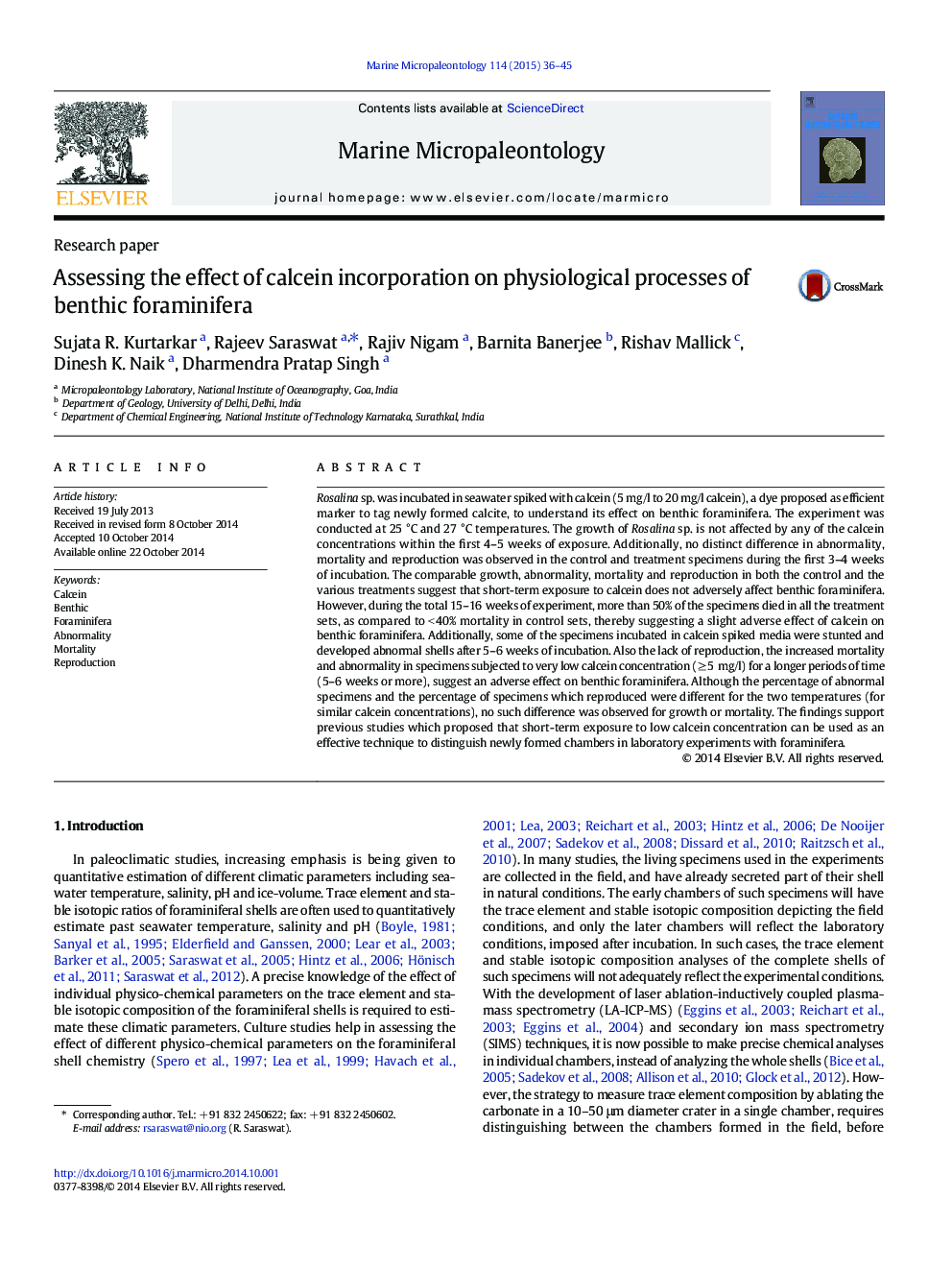| Article ID | Journal | Published Year | Pages | File Type |
|---|---|---|---|---|
| 6448524 | Marine Micropaleontology | 2015 | 10 Pages |
â¢Effect of calcein on benthic foraminifera has been assessed.â¢Short-term exposure to calcein up to 20 mg/l does not affect foraminifera.â¢Persistent exposure to calcein causes mortality and abnormality.
Rosalina sp. was incubated in seawater spiked with calcein (5 mg/l to 20 mg/l calcein), a dye proposed as efficient marker to tag newly formed calcite, to understand its effect on benthic foraminifera. The experiment was conducted at 25 °C and 27 °C temperatures. The growth of Rosalina sp. is not affected by any of the calcein concentrations within the first 4-5 weeks of exposure. Additionally, no distinct difference in abnormality, mortality and reproduction was observed in the control and treatment specimens during the first 3-4 weeks of incubation. The comparable growth, abnormality, mortality and reproduction in both the control and the various treatments suggest that short-term exposure to calcein does not adversely affect benthic foraminifera. However, during the total 15-16 weeks of experiment, more than 50% of the specimens died in all the treatment sets, as compared to < 40% mortality in control sets, thereby suggesting a slight adverse effect of calcein on benthic foraminifera. Additionally, some of the specimens incubated in calcein spiked media were stunted and developed abnormal shells after 5-6 weeks of incubation. Also the lack of reproduction, the increased mortality and abnormality in specimens subjected to very low calcein concentration (â¥Â 5 mg/l) for a longer periods of time (5-6 weeks or more), suggest an adverse effect on benthic foraminifera. Although the percentage of abnormal specimens and the percentage of specimens which reproduced were different for the two temperatures (for similar calcein concentrations), no such difference was observed for growth or mortality. The findings support previous studies which proposed that short-term exposure to low calcein concentration can be used as an effective technique to distinguish newly formed chambers in laboratory experiments with foraminifera.
